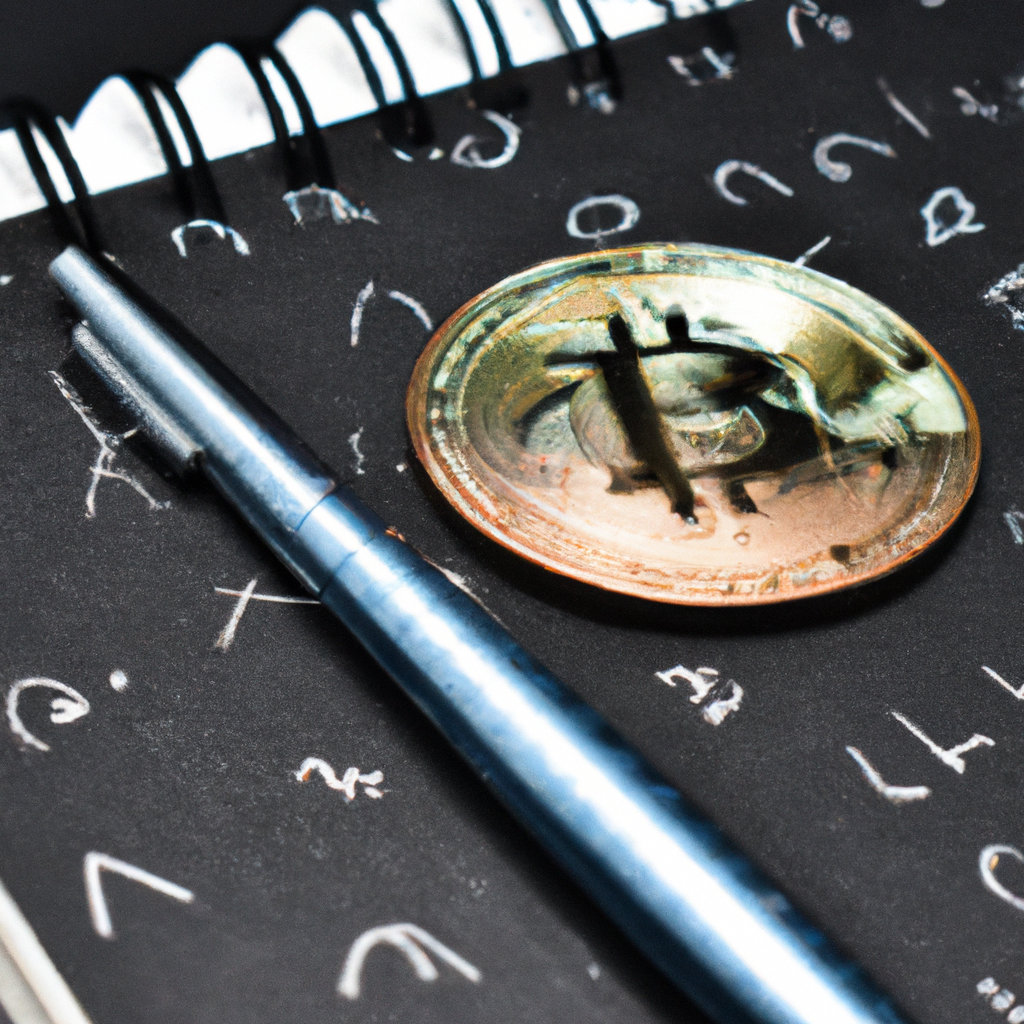In today’s digital age, securing your digital currency has become a crucial task. With the rise of cryptocurrencies and online transactions, the risk of cyber attacks and thefts has increased significantly. Therefore, it is essential to take necessary precautions to protect your digital assets. In this article, we will discuss 10 effective ways to secure your digital currency and keep it safe from potential threats.
- 1. Introduction
- 2. Best practices for securing your digital currency
- 2.1. Use two-factor authentication
- 2.2. Keep your private key offline and secure
- 2.3. Use a hardware wallet
- 2.4. Keep your software up to date
- 2.5. Use a strong and unique password
- 3. Common threats to digital currency security
- 3.1. Phishing scams
- 3.2. Malware and viruses
- 3.3. Hackers and cyber attacks
- 3.4. Insider threats
- 3.5. Social engineering
1.Introduction
Digital currencies have become increasingly popular over the years, with Bitcoin being the most well-known. However, with the rise in popularity comes the rise in cybercrime. It is important to secure your digital currency to protect it from theft or loss. In this article, we will discuss 10 effective ways to secure your digital currency and keep it safe from hackers and other cyber threats.
1.1.What is digital currency?
Digital currency, also known as cryptocurrency, is a form of virtual currency that operates independently of a central bank. It uses encryption techniques to secure and verify transactions, as well as to control the creation of new units. Digital currency can be used to purchase goods and services online, and can also be traded on various exchanges for other types of currency or assets. Some of the most popular digital currencies include Bitcoin, Ethereum, and Litecoin.
1.2.Why is security important?
Security is of utmost importance when it comes to securing your digital currency. As the world becomes increasingly digital, more and more people are using digital currencies to make transactions. However, with this convenience comes an increased risk of hackers and cyber criminals. Without adequate security measures in place, your digital currency is vulnerable to theft and fraud. This is why it is important to take steps to ensure the security of your digital currency, such as using secure wallets, two-factor authentication, and strong passwords.
1.3.Types of digital currencies
Digital currencies have been gaining popularity over the years as a means of payment and investment. However, with the rise in their usage, there have also been increasing concerns about their security. In this article, we will discuss 10 effective ways to secure your digital currency. But first, let’s take a look at the different types of digital currencies available in the market.
2.Best practices for securing your digital currency
It’s important to keep your digital currency safe from hackers and other security threats. Here are 10 effective ways to secure your digital currency:
1. Use a hardware wallet: A hardware wallet is a physical device that stores your digital currency offline, making it less vulnerable to hacking.
2. Enable two-factor authentication: Two-factor authentication adds an extra layer of security to your account by requiring a second form of verification, such as a code sent to your phone.
3. Keep your software updated: Make sure you’re using the latest version of your digital currency wallet software to ensure it has the latest security features.
4. Use a strong password: Use a unique, strong password for your digital currency wallet and change it regularly.
5. Be careful with public Wi-Fi: Avoid using public Wi-Fi networks to access your digital currency wallet as they may not be secure.
6. Use a VPN: If you must use public Wi-Fi, use a virtual private network (VPN) to secure your connection.
7. Backup your wallet: Always backup your digital currency wallet and keep a copy in a safe place.
8. Use encryption: Use encryption tools to protect your digital currency transactions and communications.
9. Be cautious of phishing scams: Be wary of emails or messages asking for your digital currency wallet information or passwords.
10. Keep your digital currency investments private: Avoid discussing your digital currency investments on social media or other public forums.
2.1.Use two-factor authentication
Two-factor authentication adds an extra layer of security to your digital currency accounts by requiring a second form of authentication in addition to your password. This can be done through a text message, a phone call, or a specialized app. Make sure to enable two-factor authentication on all of your digital currency accounts to prevent unauthorized access.
2.2.Keep your private key offline and secure
One of the most important aspects of securing your digital currency is to keep your private key offline and secure. Your private key is essentially the password that allows you to access and transfer your digital currency. If your private key falls into the wrong hands, your entire digital currency holdings could be compromised. To keep your private key secure, consider storing it on a hardware wallet or a paper wallet. Both options allow you to keep your private key offline and away from potential hackers or cyber threats.
2.3.Use a hardware wallet
One of the best practices for securing your digital currency is to use a hardware wallet. A hardware wallet is a physical device that stores your digital currency offline, making it less vulnerable to hacking and theft. It works by generating and storing your private keys on the device, which are needed to access your digital currency. By using a hardware wallet, you can have peace of mind knowing that your digital currency is safe and secure.
2.4.Keep your software up to date
One of the best practices for securing your digital currency is to keep your software up to date. This includes not only your digital wallet software, but also your operating system and any other software that you use to access your digital currency. Outdated software can have vulnerabilities that can be exploited by hackers, so it is important to always install the latest updates and patches. This can help to protect your digital currency from potential security breaches and keep it safe from harm.
2.5.Use a strong and unique password
The first and foremost step in securing your digital currency is to use a strong and unique password. Avoid using common words or phrases, personal information, or sequential numbers. Instead, create a password that is at least 12 characters long, includes a mix of upper and lowercase letters, numbers, and special characters. You can also use password manager tools that generate and store strong passwords for you.
3.Common threats to digital currency security
As the use of digital currency becomes more popular, the threats to its security also increase. Some of the most common threats include:
1. Phishing attacks: These attacks involve hackers sending fraudulent emails or messages to trick users into giving away their private keys or passwords.
2. Malware: Malicious software can be used to steal digital currency from users’ wallets.
3. Hacking: Hackers can gain access to digital wallets and steal currency.
4. Insider threats: People with access to sensitive information can steal digital currency.
5. Physical theft: Digital wallets can be stolen just like physical wallets.
It is important for digital currency users to be aware of these threats and take steps to protect their assets.
3.1.Phishing scams
Phishing scams are one of the most common threats to digital currency security. These scams involve fraudulent emails, websites or messages that appear to be from legitimate sources but are actually designed to steal your personal information or digital currency. Phishing scams can be difficult to detect, as they often use convincing language and graphics to trick people into clicking on a link or entering their login credentials. To protect yourself from phishing scams, always double-check the URL of any website or link before entering any personal information, and never click on suspicious links or download attachments from unknown sources.
3.2.Malware and viruses
Malware and viruses are some of the most common threats to digital currency security. These malicious programs are designed to infiltrate your computer and steal your digital currency by accessing your private key. Malware can be disguised as legitimate software or can be downloaded unknowingly when visiting certain websites. Once installed, it can monitor your keystrokes, take screenshots, and even control your webcam. Viruses, on the other hand, are designed to replicate themselves and spread to other computers. They can also be used to steal your digital currency by accessing your private key. To protect yourself from these threats, it is important to keep your antivirus software up-to-date and avoid downloading software or visiting websites from untrusted sources.
3.3.Hackers and cyber attacks
One of the biggest threats to digital currency security is the risk of cyber attacks and hacking. Hackers are constantly on the lookout for vulnerabilities in digital currency systems that they can exploit to steal funds or disrupt transactions. They use a variety of techniques to gain access to digital wallets, including phishing scams, malware, and brute force attacks. To protect your digital currency from these threats, it’s important to use strong passwords, keep your software up to date, and use two-factor authentication whenever possible.
3.4.Insider threats
Insider threats are one of the most common threats to digital currency security. These threats come from within an organization and can be caused by employees or contractors who have access to sensitive information or systems. Insider threats can be intentional or unintentional, and can include theft, fraud, or sabotage. To protect against insider threats, it is important to have strict access controls in place, monitor employee behavior, and implement strong encryption and authentication measures.
Conclusion
In conclusion, securing your digital currency is crucial to protect your investment from cyber threats. By implementing these 10 effective ways, you can safeguard your assets and ensure peace of mind in the digital world.






3.5.Social engineering
Social engineering is the art of manipulating people into divulging confidential information. This can be done through various means such as phishing emails, fake websites, and phone calls. Hackers use social engineering tactics to gain access to digital currency wallets and steal funds. It is important to be aware of these tactics and to never share your private key or seed phrase with anyone.